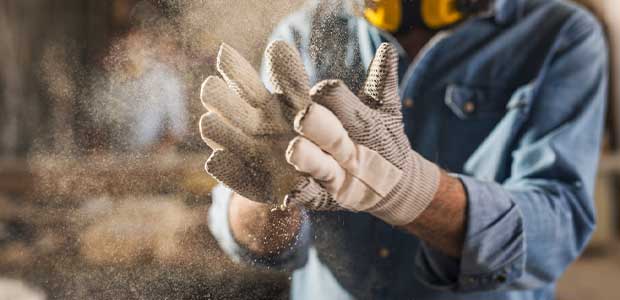
The Progression of Hand Protection: Guarding Your Most Valuable Tools
Hand protection has come a long way since the first workers used their hands to operate.
- By Sydny Shepard
- Aug 01, 2022
There are many tools that have become invaluable to employees in a variety of industries across the decades, but one could argue that the most important tool to a worker is their hands. It is with these appendages that we are able to push, pick and pull items as well as hold other tools that can help get the job done. It is not surprising that laborers and employees through history took time to create ways to protect and guard hands in an effort to lengthen the amount of time a worker would be viable in the industry.
In this issue’s special coverage for our 90th anniversary, OH&S will discuss common injury types, how much hand injuries cost workplaces and the history of hand protection, including the evolution of protective equipment and the advanced technology through the years.
By the Numbers
It doesn’t matter what your job is, you are most likely at risk of suffering a hand injury. You may be an electrician at risk of flame or shock hazards. Perhaps you are a construction worker at risk of crushing injuries or lacerations. You could even be an office employee who is at risk of carpel tunnel. Despite how common hand injuries can be, workplaces often find they are overlooking hand protection in their safety programs.
According to the Bureau of Labor Statistics, one million workers arrive at an emergency department with injuries to the hands each year. What’s more is that seventy percent of workers who experienced a hand injury were not wearing gloves and the other 30 percent had gloves on, but they were damaged or inadequate for the work task.
These injuries and oversights are costing both the employee and the employer. Severe injuries like severed fingers and nerve damage could make it nearly impossible for a person to get back to work or even engage in recreational activities that they once loved. For employers, the average hand injury claim exceeds over $25,000 in lost wages and medical costs, according to the National Safety Council.
Now understanding what the costs are for ignoring hand protection, let’s look into some of the most common injuries to the hand and ways you can protect against them.
Common Injuries to the Hand
To protect against hand injuries, you first need to be aware of what kinds of injuries are most common. Below are just a few of the many types of hand injuries an employee could sustain at work.
This article originally appeared in the July/August 2022 issue of Occupational Health & Safety.